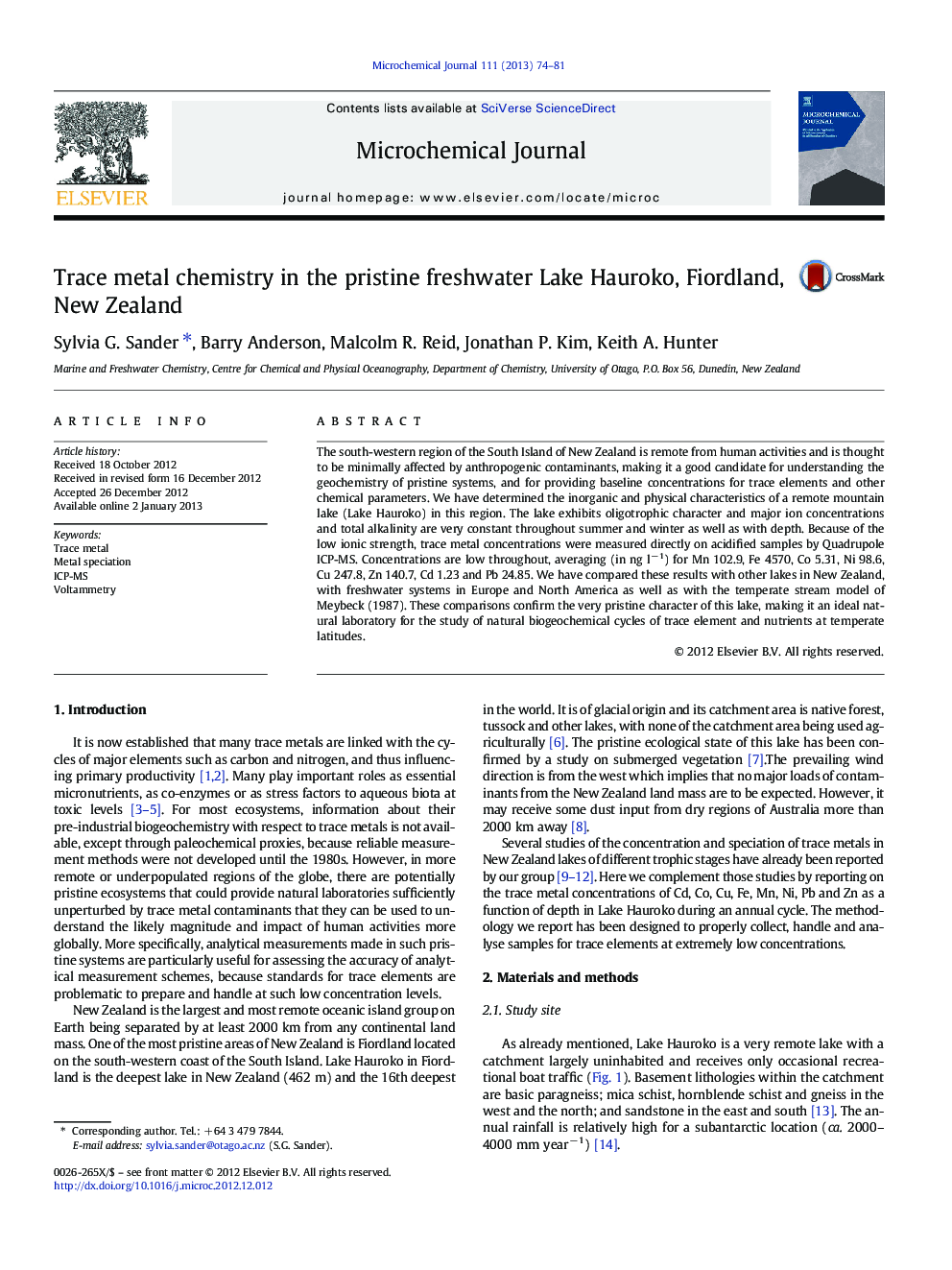| Article ID | Journal | Published Year | Pages | File Type |
|---|---|---|---|---|
| 1227803 | Microchemical Journal | 2013 | 8 Pages |
The south-western region of the South Island of New Zealand is remote from human activities and is thought to be minimally affected by anthropogenic contaminants, making it a good candidate for understanding the geochemistry of pristine systems, and for providing baseline concentrations for trace elements and other chemical parameters. We have determined the inorganic and physical characteristics of a remote mountain lake (Lake Hauroko) in this region. The lake exhibits oligotrophic character and major ion concentrations and total alkalinity are very constant throughout summer and winter as well as with depth. Because of the low ionic strength, trace metal concentrations were measured directly on acidified samples by Quadrupole ICP-MS. Concentrations are low throughout, averaging (in ng l− 1) for Mn 102.9, Fe 4570, Co 5.31, Ni 98.6, Cu 247.8, Zn 140.7, Cd 1.23 and Pb 24.85. We have compared these results with other lakes in New Zealand, with freshwater systems in Europe and North America as well as with the temperate stream model of Meybeck (1987). These comparisons confirm the very pristine character of this lake, making it an ideal natural laboratory for the study of natural biogeochemical cycles of trace element and nutrients at temperate latitudes.
► The inorganic and physical characteristics of a remote New Zealand mountain lake (Lake Hauroko) was determined. ► Trace metal concentrations were measured directly on acidified samples by Quadrupole ICP-MS. ► First Co data published for uncontaminated New Zealand lake. ► Comparisons with northern hemisphere and other New Zealand lakes confirm the very pristine character of this lake. ► Lake Hauroko is an ideal natural laboratory to study natural biogeochemical cycles of trace element and nutrients.
